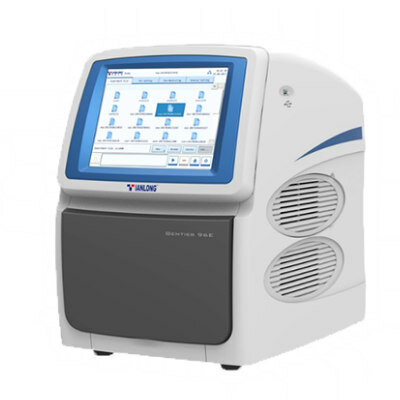Pathology

Susceptible Genes Identified for Childhood Kidney Disease
Childhood nephrotic syndrome, also known as nephrosis, is an incurable disease with an unknown cause, characterized by large amounts of protein leaving the body in the patient's urine, and protein levels in the bloodstream becoming extremely low. More...09 Aug 2018


Melanoma Biomarkers Predict Checkpoint Blocker Response
The outlook for patients with advanced melanoma has dramatically improved in recent years because of drugs known as immune checkpoint inhibitors, which mobilize the immune system to attack cancer. These drugs block checkpoint molecules that act as brakes on the immune system and unleash immune defenders such as T cells to recognize and attack cancer. More...02 Aug 2018

New Target Protein for Colon Cancer Identified
Colorectal cancer (CRC) is the third most commonly diagnosed cancer and the third leading cause of cancer-related death in men and women in the USA. Pathogenic mediators that regulate CRC tumorigenesis are desirable biomarkers to predict prognosis, recurrence of the disease, and response to therapy to improve the management of patients with CRC. More...02 Aug 2018

Biomarker Detects Active Melanoma and Predicts Survival
Melanoma is the most dangerous form of skin cancer, these cancerous growths develop when unrepaired DNA damage to skin cells, which is most often caused by ultraviolet radiation from sunshine or tanning beds, triggers mutations (genetic defects) that lead the skin cells to multiply rapidly and form malignant tumors. More...25 Jul 2018


Integrated Analyses Offer Molecular Insights to Tumor Subtypes
The most common malignancy of young adult males of European descent are testicular germ cell tumors (TGCTs) of the type derived from germ cell neoplasia in situ (GCNIS). There are two major histologic types: pure classic seminoma and nonseminomatous germ cell tumors (NSGCTs). More...19 Jul 2018
In Other News
Obesity Affects Prostate Cancer Test Results
Inflammation Marker Tied to Dementia Increases with Age
Circulating Tumor Cell-Based AR-V7 Test Validated
New Genre of Small-Cell Lung Cancer Discovered
Simple Test Could Reduce Treatment of Bladder Cancer
Recurrent Rearrangements Identified in Soft Tissue Tumors
Tissue-Imaging Technology Enables Real-Time Diagnostics
Method Identifies Cancer in Early Onset Diabetics
Fine-Scale Histologic Features Estimated at Low Magnification
Vitamin D Levels Linked to Colorectal Cancer Risk
Vaginal Bacteria Linked to Cervical Cancer
Biochip Developed to Detect Prostate Cancer Cells
Post-Cardiac Surgery Infection Associated with Different Diseases
MSI Tumor Analysis Implicates Lynch Syndrome in Cancer Types
Hormone Levels Alter CVD Risk in Older Women
Hereditary Breast Cancer Tests Double Detection Rate
Genetic Predisposition Validated in Medulloblastoma
Molecular Subtype Identified for CRCs Metastasized to Liver
Cell Block Prep Method Modified for Molecular Studies
Thyroid Cancer Genetics Study Finds New Mutations
Breath and Urine Tests Detect Early Breast Cancer
Biomarkers Identified for Irritable Bowel Syndrome
Cancer Blood Test Engineered to Detect Tumors Early
The Pathology channel details advances in the field of Surgical Pathology and all its subspecialties, including Cytopathology and its subspecialties.










